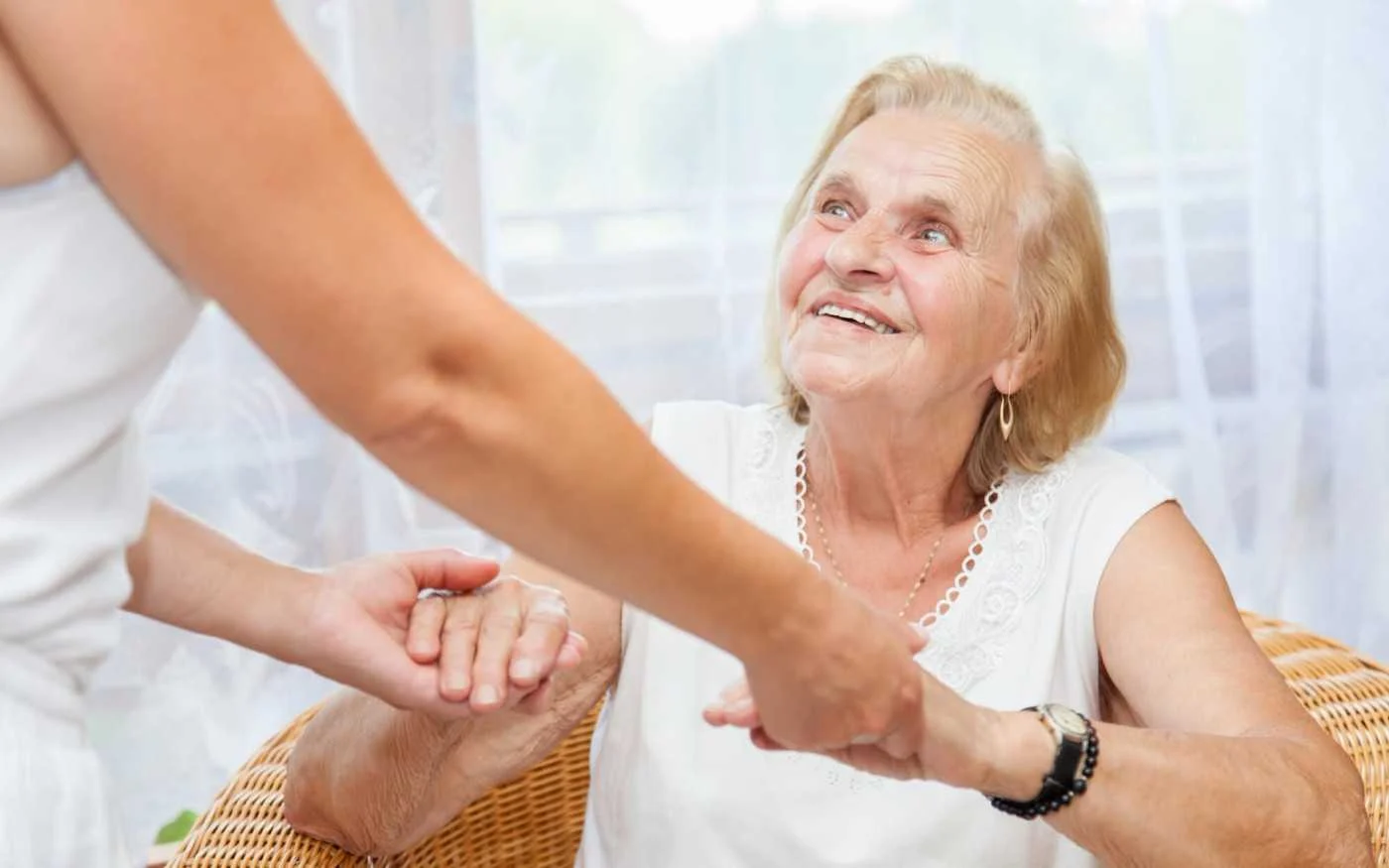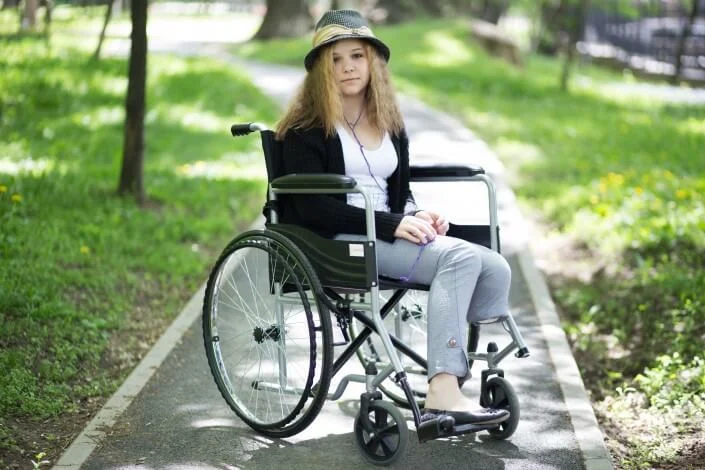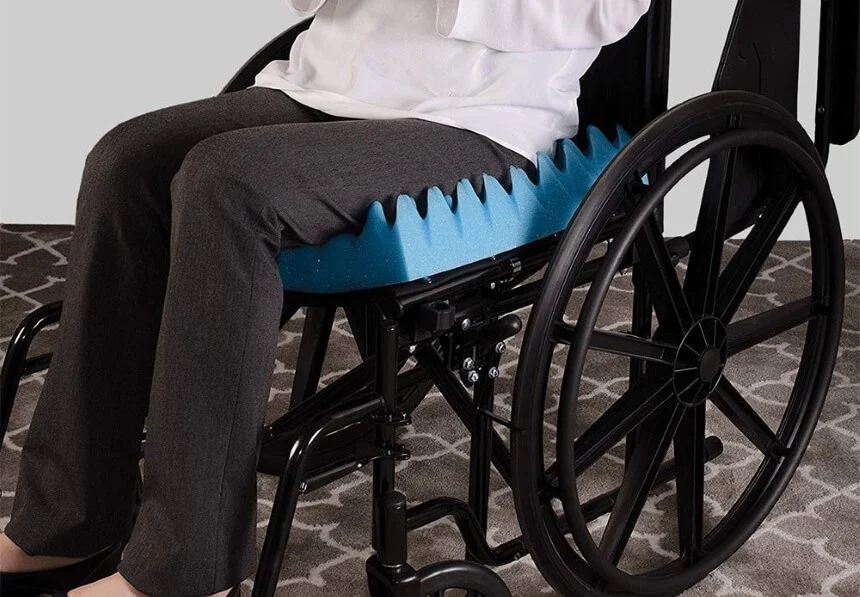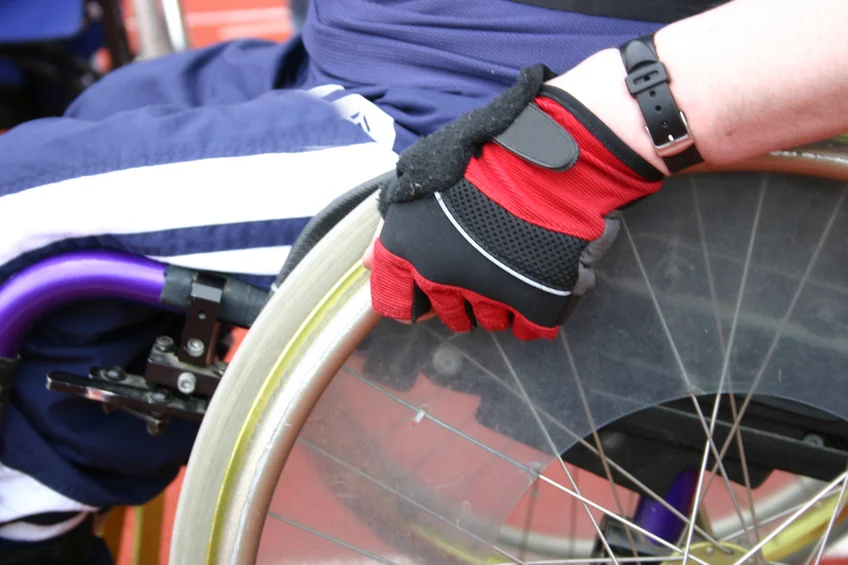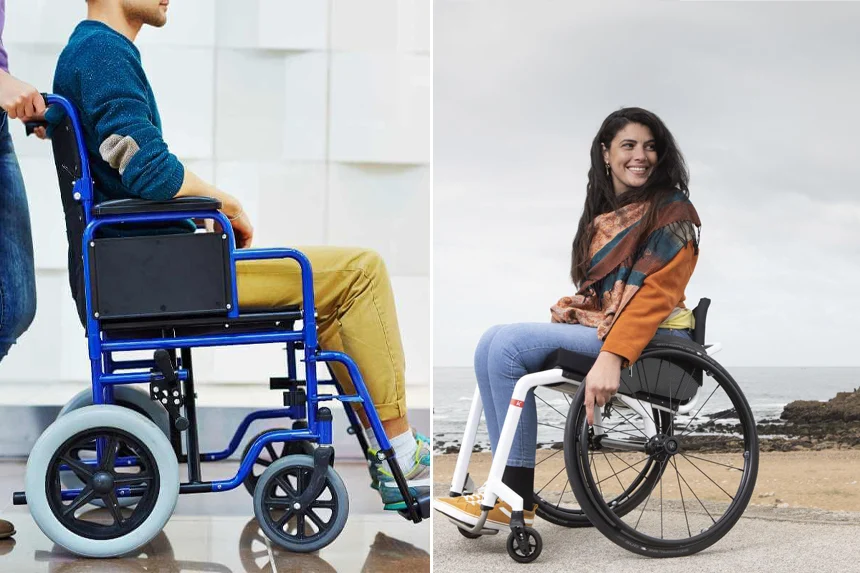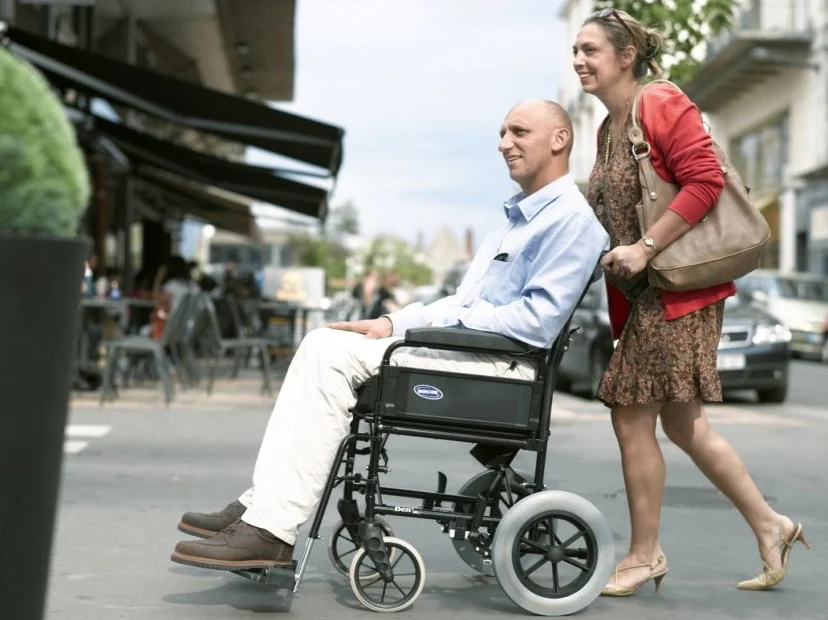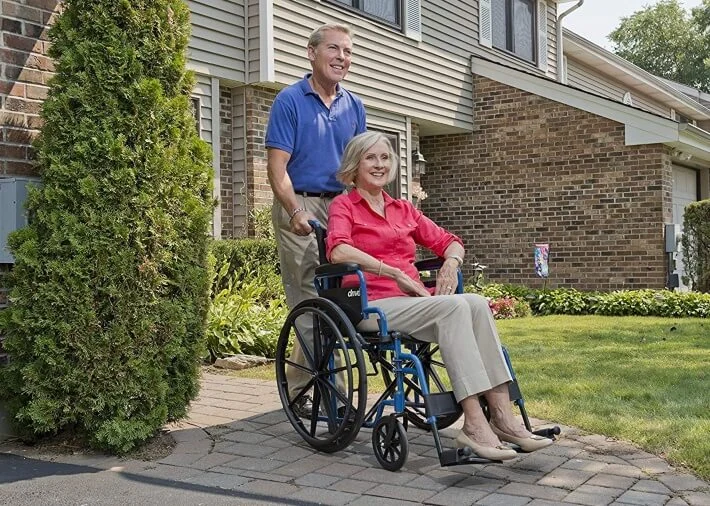For the majority of us, getting up and sitting down are simple activities that we don’t give much thought to. For an elderly person, the process of getting up can be quite challenging. If not done correctly, the elderly person and the person trying to help them could suffer serious injury. If you’re taking care of a person with mobility issues, you might be wondering how to help the elderly stand up? If that’s the case, you’ll find this article very useful. We’ll highlight the safety process to follow when you’re helping an elderly person to stand up.
By Nan J.Corbo | ✅ Reviewed by Ray Butcher |
SeniorFitness is reader-supported. We may earn a commission through products purchased using links on this page. Learn more about our process here
Safe techniques
There are a few basic safety techniques to follow when it comes to lifting an elderly person from a bed, couch, or chair. Consider the tips our experts have listed below.
Be careful with your back
While your first impulse might be to reach up and just lift the elderly person up to their feet, it’s important to note that this might injure your back. It might also hurt the other person who is already feeling frail. The last thing you want to happen is for both of you to be injured during the transfer process.
Think about safety
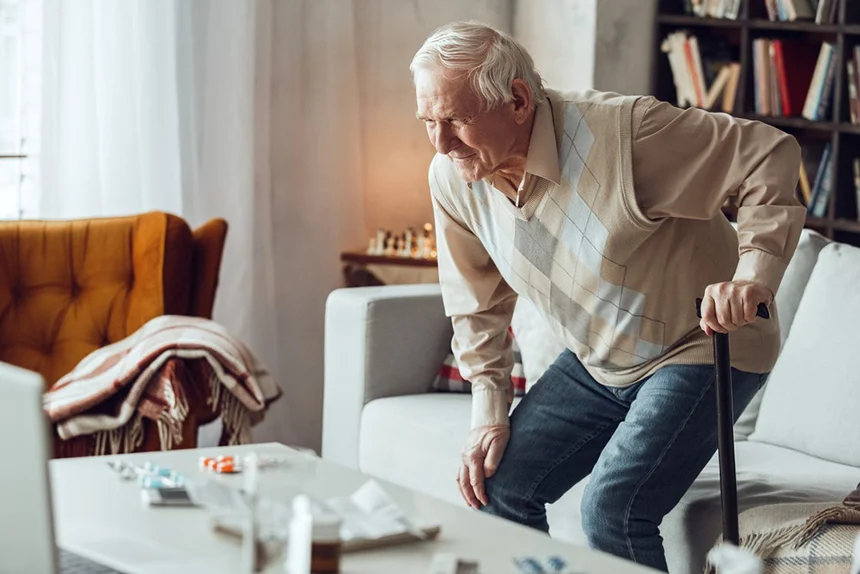
Work through the whole process and check the area for obstacles. There are a few safety tips to bear in mind before you begin the lifting process. The most important pointers include the following:
- Clear objects and obstacles: Ensure there are no objects around the chair, couch, or bed that could trip anyone. Make sure that the floor isn’t slippery. Be sure to check that there aren’t loose rugs in the path where the person will be standing or walking. For a guide on actions to take to prevent and assist someone who has fallen, read our informative article entitled, “What to do After falling in the shower – must know instructions.”
- Adjust the height if possible: If the bed or chair they’re sitting on is height-adjustable, position it so that their hips are slightly higher than their knees. The more upright they are, the easier it will be for them to get up with the limited strain.
- Use the walker or wheelchair: Keep the walker, wheelchair, or cane close by to reach out and hold onto to prevent falling. The Karman Healthcare 19.8lbs Ergonomic Ultra Lightweight Wheelchair is ideal for use to help an elderly person to stand up. It’s lightweight, features Ergonomic air pads, and has adjustable height. Be sure to opt for a wheelchair cushion to provide more support.
Communicate and discuss
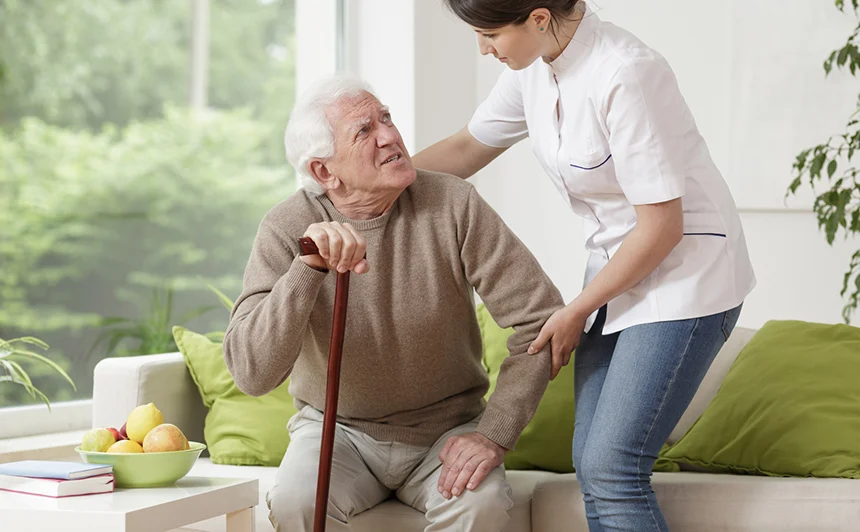
Explain to the elderly person how you’re going to assist them and what you’ll need them to do. They will need to know what to hold onto and when to let go. It’s important to discuss this with them before the transfer as well as during.
Don’t assume they should know what you’re trying to do. Depending on their current condition, you might have to be patient in your explanation and show them what you mean by simulating the getting up position from their vantage point.
Body mechanics
Helping an elderly person stand up might look easy, but it can easily result in injury if not done correctly. Employing good body mechanics is the trick to preventing injuries. Some simple pointers include the following:
- Stand close: Always stand close to the elderly person you’ll be helping. It’ll be easier to assist with the transfer and also give you more control over them if they start swaying.
- Lift from the side: It’s important to refrain from trying to lift the person from behind. Doing this puts your own back and shoulders at risk of strain. Lifting from the front puts you at risk of falling or accidentally hurting the person you’re lifting. Rather stand next to the person with your arm around them and ease them up.
- Never pull arms or hands: Pulling on the person’s arms or hands places an increased amount of stress on their shoulders. With existing frailty, this pulling motion can result in a rotator cuff injury or even a tendon tear.
- Prepare your body for the lifting: Get your knees and hips ready for the lift by bending your knees. It’s important to keep your spine in a neutral position to avoid strain. Having a wider stance will help you stabilize your weight. Loosen your muscles and prepare your body for the transfer process.
Investing in a quality walker is the ideal way to give the elderly person something to lean on as they lift up. It’s also the perfect way to move to the next point without the risk of falling down.
Stand up slowly and steady
When everyone is in a position to begin the transfer, it’s important to keep the following tips in mind to keep everyone safe.
- Move slowly: Lift the person up slowly. You might want to rush the process to get it “over and done with,” but rushing here could cause injury. Bear in mind that the person could feel dizzy, nervous, or be in pain, and rushing will just make matters worse.
- Be encouraging: It’s important to offer constant encouragement to get the process moving. As they complete each action, offer praise and remind them of what the next action will be.
- Stabilize when necessary: As the person manages to stand up, check that they are feeling stable and aren’t feeling dizzy. Let them rest for a few seconds before moving on to the next step if they need to. Be sure to have an arm around them in case of a sudden dizzy spell.
Standing up and moving around can also be made easier by using a ProHeal Stand Up Walker with Seat. The padded armrests handle to make it easy to stand up tall and straight. This type of walker is more stable than the average walker and doesn’t force a person to learn uncomfortably forward.
Helping the Elderly Stand Up
By following the steps we’ve listed, it’ll not only enable you to safely help an elderly person stand up, but you’ll be able to do it without hurting yourself in the process. Wherever possible, ensure that you have a walker or wheelchair close by should either one of you need to lean on or grab something during the lifting process. It’s important to emphasize the importance of communication. The lifting process must be discussed and understood by the elderly person to ensure they don’t misinterpret your intentions. Be sure to give them a few seconds to catch their breath and make sure they aren’t feeling dizzy. Finally, patience and encouragement are necessary to keep the elderly person’s confidence up. Take care and be gentle as you help an elderly person stand up!

